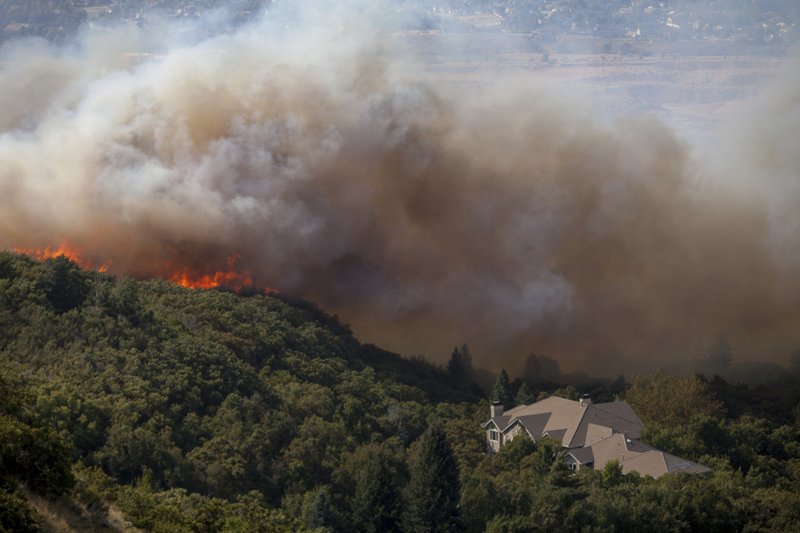WASHINGTON -- Interior Secretary Ryan Zinke on Tuesday directed all land managers and park superintendents to be more aggressive in cutting down small trees and underbrush to prevent wildfires as the smoke-choked West faces one of the worst fire seasons in a decade.
In a memo, Zinke said the Trump administration will take a new approach and work proactively to prevent fires "through aggressive and scientific fuels reduction management" to save lives, homes and wildlife habitat.
Wildfires are chewing across dried-out Western forests and grassland. To date, 47,700 wildfires have burned more than 8 million acres across the country, with much of the devastation in California, Oregon and Montana, Zinke said.
As of Tuesday, 62 large fires were burning across nine Western states, with 20 fires in Montana and 17 in Oregon, according to the National Interagency Fire Center. Nearly half the large fires in the West reported zero acreage gains on Monday, helping firefighters across the West make progress toward containing them, the agency said.
The Forest Service and Interior Department have spent more $2.1 billion so far this year fighting fires -- about the same as in all of 2015, the most expensive wildfire season on record.
Those figures do not include individual state spending. In Montana, where more than 90 percent of the state is in drought, the state has spent more than $50 million on fire suppression since June, with fires likely to burn well into the fall.
Exacerbated by drought and thick vegetation, wildfires are more damaging, more costly and more threatening, Zinke said.
"I have heard this described as 'a new normal.' It is unacceptable that we should be satisfied with the status quo," he said.
A Section on 09/13/2017
